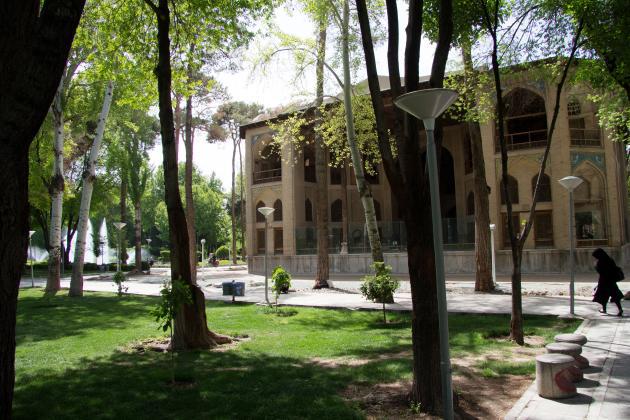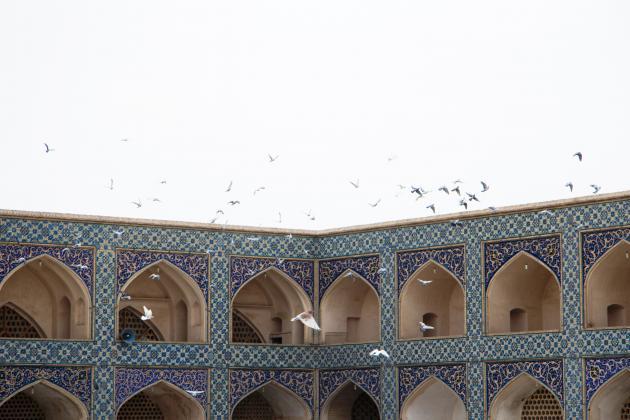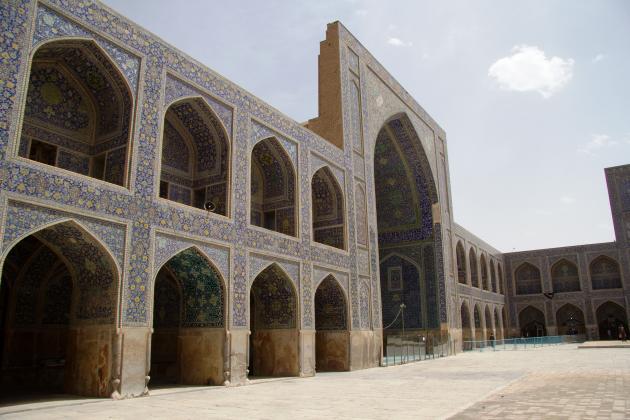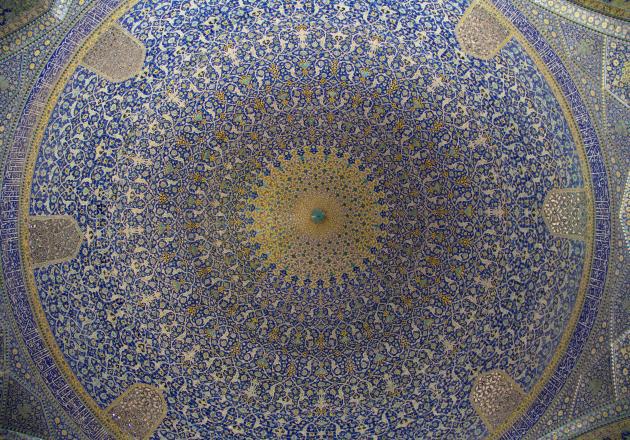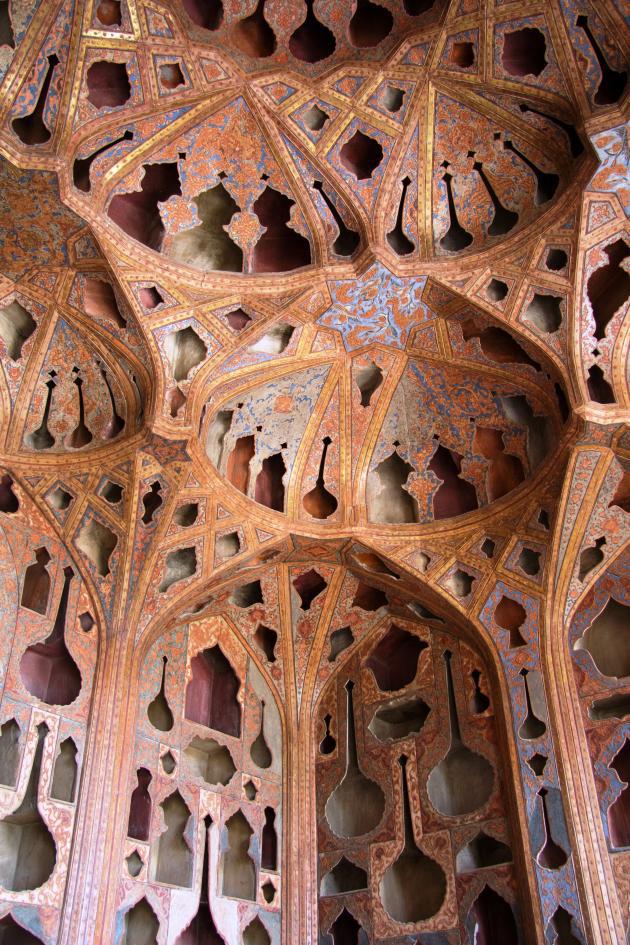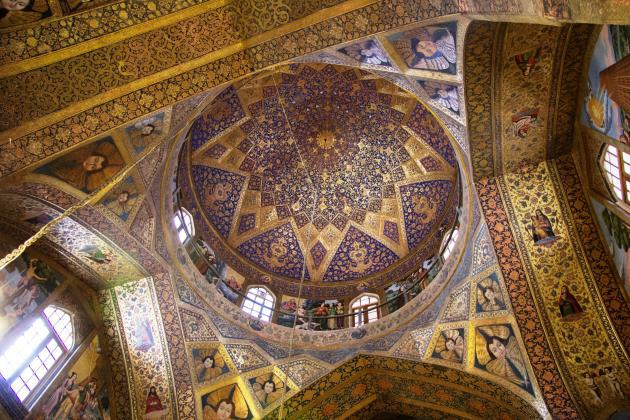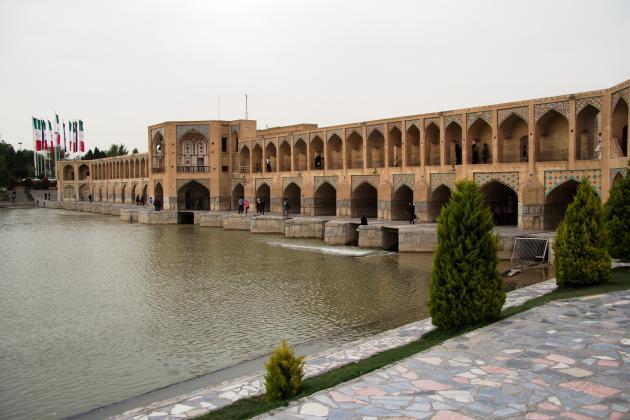According to a Persian saying, “Esfahan nesf-e jahan”, Isfahan is half the world. In 1598, the Safavid dynasty made Isfahan the capital of its empire. To this day, the city is resplendent with magnificent mosques, rich bazaars and picturesque gardens.
Isfahan was more than just a showcase for the Safavids’ imperial power and magnificence; it was also a cosmopolitan city and home to many artists and highly skilled craftsmen. Naqsh-e Jahan Square (“Image of the World Square”), which was built during the reign of Shah Abbas I in 1602, is the heart of modern Isfahan. It is surrounded by mosques, markets, palaces and public buildings. Measuring 512 x 163 metres, it is one of largest public squares in the world.
Siose Bridge, which is also known as Siosepol (“Bridge of the 33 Arches”), was built during the reign of Safavid Shah Abbas I between 1599 and 1602. To this day, the 298-metre-long bridge is considered one of the city’s architectural masterpieces. To walk along the banks of the Zayandeh River flowing beneath its arches after sunset is to be reminded of Isfahan’s golden age.
Hasht Behesht Palace (“Eight Paradises Palace”), which was built in the seventeenth century, is said to have been one of the most luxurious of all the imperial residences. Unfortunately, however, little of the original remains. Hardly anything of the palace’s interior decoration has survived intact. Nevertheless, visitors can enjoy the peace and solitude of the Persian garden in which the palace stands.
It is thought that Jameh Mosque was built on top of a Sasanian fire temple. Today, it is both a museum that houses Islamic art and the largest mosque in Iran. The mosque’s blue “iwans” (a vaulted space that is open on three sides) are considered great treasures.
Together with Naqsh-e Jahan Square, the Shah Mosque, which has been known as Imam Mosque since the Islamic Revolution, is considered one of the most important historical sites in the world and is on UNESCO’s World Heritage List. The Shah Mosque is an imposing complex that reflects both the imagination of Shah Abbas I and the skill of his architects.
The Shah Mosque is a masterpiece of Islamic architecture and contains numerous examples of different facets of this art: the base stones are made of white marble, while the walls are decorated with painted mosaics. The dome of the main area is a magnificent example of tile-painting. It is 36 metres high. On the outside, it towers a breath-taking 51 metres above the ground.
The music room of Ali-Qapu Palace (“Ali’s Gate Palace”) is one of the masterpieces of Persian secular architecture. The vase-shaped stucco walls were designed in such a way as to improve the room’s acoustics. Ali-Qapu Palace was also built during the reign of Shah Abbas I and remains one of the most impressive of the surviving Safavid residences.
In the early seventeenth century, Shah Abbas I moved the inhabitants of the Armenian city of Julfa to southern Isfahan and named the district “New Julfa”. As merchants, entrepreneurs and artists, the Armenians were vital to the city’s economy. The shah guaranteed their religious freedom and had churches built for them. Holy Saviour Cathedral, which is also known as Vank Cathedral, was built between 1648 and 1655. It contains fine examples of both Islamic tile mosaics and Christian holy images.
Chehel Sotun Palace is one of the few imperial residences that is still intact today. Inspired by Achaemenid column architecture, this complex was used for entertainment and receptions. The interior shown in this picture features a honeycomb-pattern façade made of mirrors.
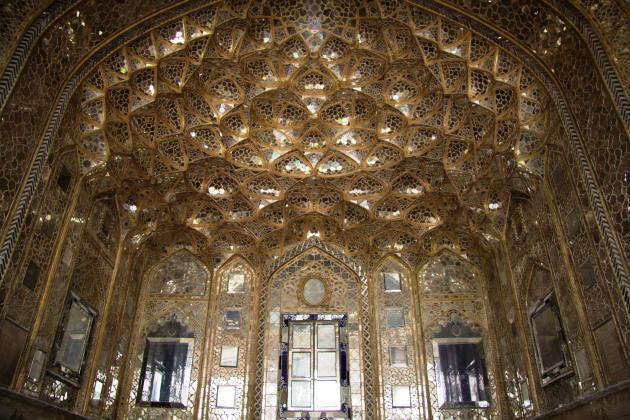
One of the most famous bridges in Isfahan is Khaju Bridge or Pol-e Khaju, which was built in 1650 during the reign of Shah Abbas II. The twin-terraced arcades are 110 metres long. The lower line of columns regulates the flow of water. The pavilion in the middle of the upper section was a viewing area for the ruling dynasty. The original tile work in the pavilion, which can still be seen, impresses both locals and visitors alike.
Today, Isfahan is a university city, an art hub and a popular tourist destination. The authorities are becoming increasingly aware of the importance of the city’s historical sites for Isfahan’s image both at home and abroad. Numerous mosques and historical complexes are currently being renovated.
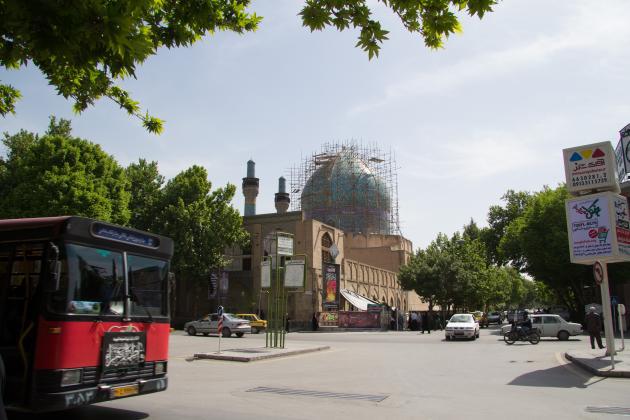 Photos by Shohreh Karimian and Johannes Ziemer
Photos by Shohreh Karimian and Johannes Ziemer
Source: qantara.de



